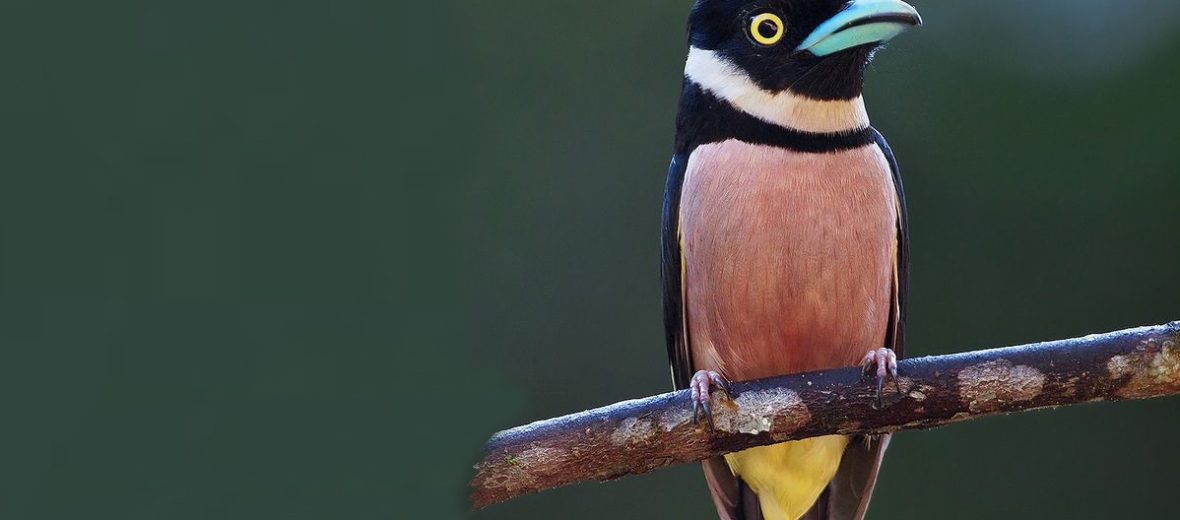
Looking like something a cartoonist drew and painted, the black and yellow broadbill is quite adorable and unique looking at the same time. These birds can be found in Indonesia, Malaysia, Brunei, Myanmar, Singapore, and Thailand. They prefer swamp forests, heath forests, evergreen forests, dipterocarp forests (tall forest trees from which resins and timber are obtained), and forest edges, along with secondary forests and plantations that contain old-growth trees. Due to habitat destruction at the hands of logging and wood harvesting, and fire suppression, these birds are listed as Near Threatened. Their populations are also decreasing.
First the Stats…
Scientific name: Eurylaimus ochromalus
Weight: Up to 1.4 ounces
Length: Up to 5.9 inches
Wingspan: Up to 11+ inches
Lifespan: Up to 19 years
Now on to the Facts!
1.) Broadbills feed on insects, molluscs, and occasionally fruit.
2.) Larger birds and sometimes weasels prey on these critters.
3.) Their song has been described as a cicada-like bubbling trill that begins with several sharp downward notes before rising in pitch and then slowly speeding up into a 12 second long, low, quivering trill.
4.) Other calls include a kor kor kor sound, made by nesting males and also a squeaky kyeeow call.
5.) Black and yellow broadbills, generally speaking, tolerate others in their territory, with fights or chases seldomly breaking out.
But wait, there’s more on the black and yellow broadbill!
6.) They can be found at elevations of up to 4,000 feet.
7.) Black-and-yellow broadbills breed during the dry season.
Did you know…?
There are approximately 15 known species of broadbill described, to date.
8.) Both male and female participate in nest construction.
9.) Their nests are pear-shaped and made out of fungal mycelia, moss, and leaves.
10.) Females lay up to 3 eggs, with an occasional 4th “runt” egg being laid.
Now a Short Black and Yellow Broadbill Video!
Be sure to share & comment below! Also, check out the Critter Science YouTube channel. Videos added frequently!
Want to suggest a critter for me to write about? Let me know here.



